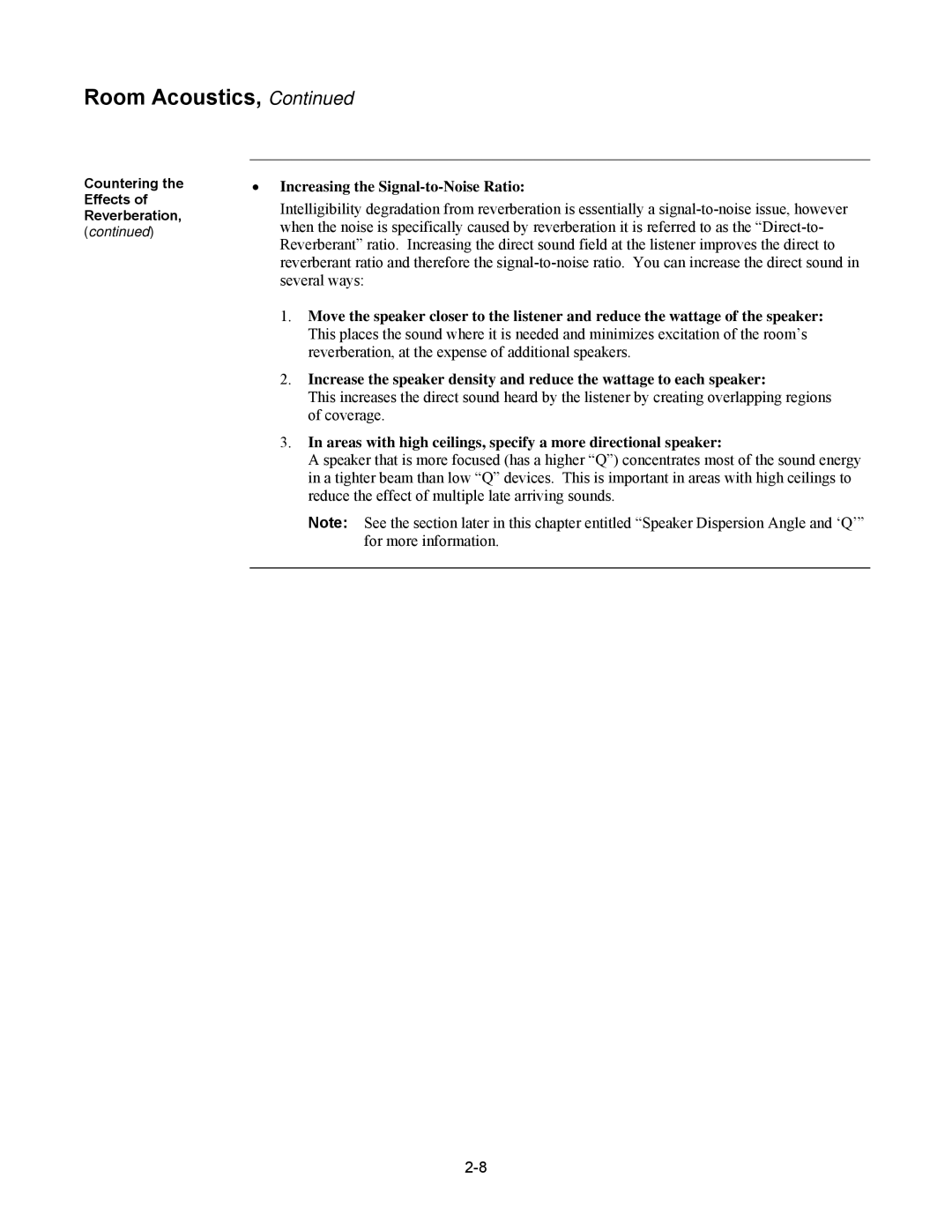
Room Acoustics, Continued
Countering the | • Increasing the | |
Effects of | Intelligibility degradation from reverberation is essentially a | |
Reverberation, | ||
when the noise is specifically caused by reverberation it is referred to as the | ||
(continued) | ||
| Reverberant” ratio. Increasing the direct sound field at the listener improves the direct to | |
| reverberant ratio and therefore the | |
| several ways: | |
| 1. Move the speaker closer to the listener and reduce the wattage of the speaker: | |
| This places the sound where it is needed and minimizes excitation of the room’s | |
| reverberation, at the expense of additional speakers. | |
| 2. Increase the speaker density and reduce the wattage to each speaker: | |
| This increases the direct sound heard by the listener by creating overlapping regions | |
| of coverage. | |
| 3. In areas with high ceilings, specify a more directional speaker: | |
| A speaker that is more focused (has a higher “Q”) concentrates most of the sound energy | |
| in a tighter beam than low “Q” devices. This is important in areas with high ceilings to | |
| reduce the effect of multiple late arriving sounds. | |
| Note: See the section later in this chapter entitled “Speaker Dispersion Angle and ‘Q’” | |
| for more information. |
